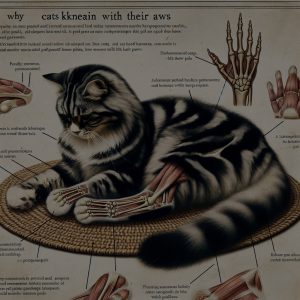
Dogs have long been known for their peculiar behavior of burying bones. This seemingly instinctual act has puzzled pet owners and scientists for years. What drives dogs to bury their bones, and what purpose does it serve? In this article, we delve into the mystery of canine bone burying and explore the possible explanations behind this behavior.
The Mysterious Behavior of Canine Bone Burying
The act of burying bones is deeply ingrained in a dog’s nature. Often seen in domestic as well as wild canines, this behavior serves as a way for dogs to hide and protect their prized possessions. Dogs have a natural instinct to hoard food and valuables, which stems from their ancestors who had to store food for the future. This behavior is not only limited to bones but can extend to toys, treats, and even household items.
Dogs are known to bury bones in various locations, from under the couch to the backyard garden. This behavior is not limited to a specific breed or size of dog, suggesting that it is a universal instinct among canines. Some experts believe that burying bones is also a way for dogs to mark their territory, as the scent of the buried bone can serve as a signal to other animals to stay away. Additionally, burying bones can be a way for dogs to alleviate anxiety or stress, providing them with a sense of security.
Unraveling the Origins of Dogs’ Instinct to Bury Bones
The instinct to bury bones can be traced back to the ancestral wolves from which modern-day dogs descended. Wolves would often bury excess food to save it for later when food was scarce. This behavior was also a way for wolves to protect their food from scavengers and other predators. Over time, this instinct has been passed down to domestic dogs, even though they no longer need to hunt for their food.
Studies have shown that the act of burying bones can also be linked to a dog’s natural instinct to dig. Digging is a behavior that is deeply rooted in the canine DNA, as it was a way for wolves to create shelter or find prey. By burying bones, dogs are not only hiding their food but also engaging in a natural behavior that satisfies their instinctual needs. Understanding the origins of this behavior can provide valuable insights into the complex relationship between dogs and their wild ancestors.
Scientific Explanations Behind Canine Bone Hoarding
From a scientific perspective, burying bones can be seen as a form of resource management for dogs. By burying bones, dogs are essentially creating a food bank for themselves, ensuring that they have a backup source of food in case their primary source runs out. This behavior is particularly common in dogs that have a history of experiencing food scarcity or competition for resources.
Furthermore, burying bones can also be linked to a dog’s cognitive development. Studies have shown that engaging in activities like burying bones can stimulate a dog’s brain and improve their problem-solving skills. By engaging in behaviors that mimic their natural instincts, dogs are able to stay mentally sharp and active. As such, bone burying can be seen as a way for dogs to exercise their cognitive abilities and maintain their overall mental well-being.
The mystery of canine bone burying is a fascinating aspect of dog behavior that continues to intrigue pet owners and scientists alike. Whether driven by instinct, territorial marking, or resource management, the act of burying bones is deeply rooted in a dog’s genetic makeup. By unraveling the origins and scientific explanations behind this behavior, we can gain a deeper understanding of the complex relationship between dogs and their wild ancestors.










